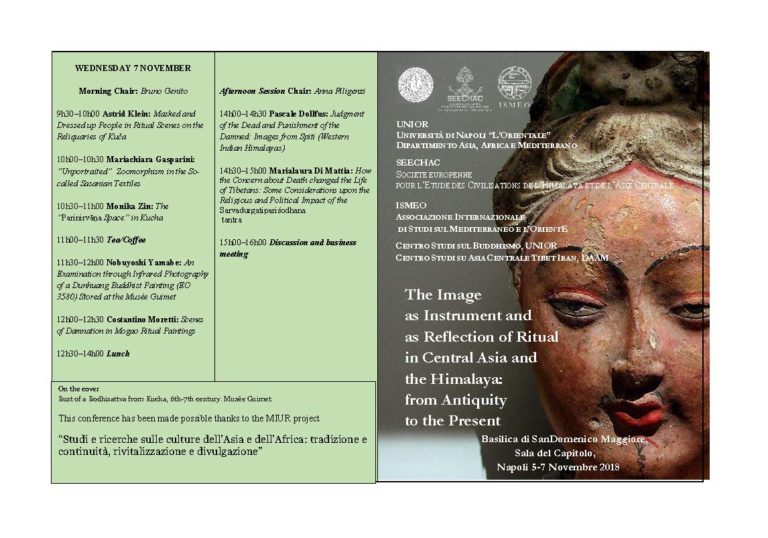The fifth international conference of the European Society for the Study of Central Asian and Himalayan Civilisations was held in Naples over the course of three days, from 5 to 7 November. The conference, entitled “The Image as Instrument and Reflection of Ritual in Central Asia and the Himalaya: from Antiquity to the Presentâ€, brought together nearly thirty scholars from eight European countries, and also from as far afield as the United States and Japan. The conference, which had been convened by Michele Bernardini and Giacomella Orofino of the University of Naples “l’Orientale†(UNIOR), was held in the magnificent Complesso Monumentale di San Domenico Maggiore. The event opened with introductory speeches by Adriano Rossi, the president of IsMEO, Michele Bernardini in his capacity as the director of DAAM (the Department of Asian, African and Mediterranean Studies) and Charles Ramble, the current president of SEECHAC. Elda Morlicchio, the Rector of UNIOR, who had been scheduled to present the first opening speech, was unable to attend owing to an unforeseen engagement. These brief introductions were followed by a special presentation on the recently established Museo dell’Arte Orientale Giuseppe Tucci by its director, Massimiliano Polichetti. Bruno Genito, speaking on the second day of the conference, prefaced his presentation on the “Elusive frontiers of the Silk Road†with a tribute to the late Anna Maria Quagliotti, former Professor of Indian art at Napoli “L’Orientale” University, as well as Vice-President founder member of SEECHAC, who had passed away in Rome on 17 August 2016.
As a glance at the titles and abstracts of the presentations will show, the contributions were a fair representation of the geographical region covered by SEECHAC, extending from Iran in the west to Mongolia in the east, and as far as the Kathmandu Valley in the south. As is usual in SEECHAC’s international conferences, the unifying principle was provided by the theme, in the present case the relationship of images to rituals, either as components in achieving the efficacy of rites or else as representations of rituals performances. The contributions yielded a wide range range of interpretations within the parameters proposed by the the call for papers, and included (to cite just three examples) the depiction of musical ensembles and their instruments in Newar art from the Kathmandu Valley (Richard Widdess), the function of early stupas in the western Himalaya (Gerald Kozicz), and the use of giant appliqué scrolls in Tibetan Buddhist ceremonies (Olaf Czaja). The chronological period too covered the entire possible range, extending from prehistoric times down to the modern day.
It was generally felt that the contributions were of sufficiently high quality to merit the publication of a set of conference proceedings, and the steering committee of SEECHAC will explore the possibilities for such an undertaking in the coming months.
We at SEECHAC would like to thank our Neapolitan colleagues for their warm welcome and for the smooth organisation of this memorable conference.





